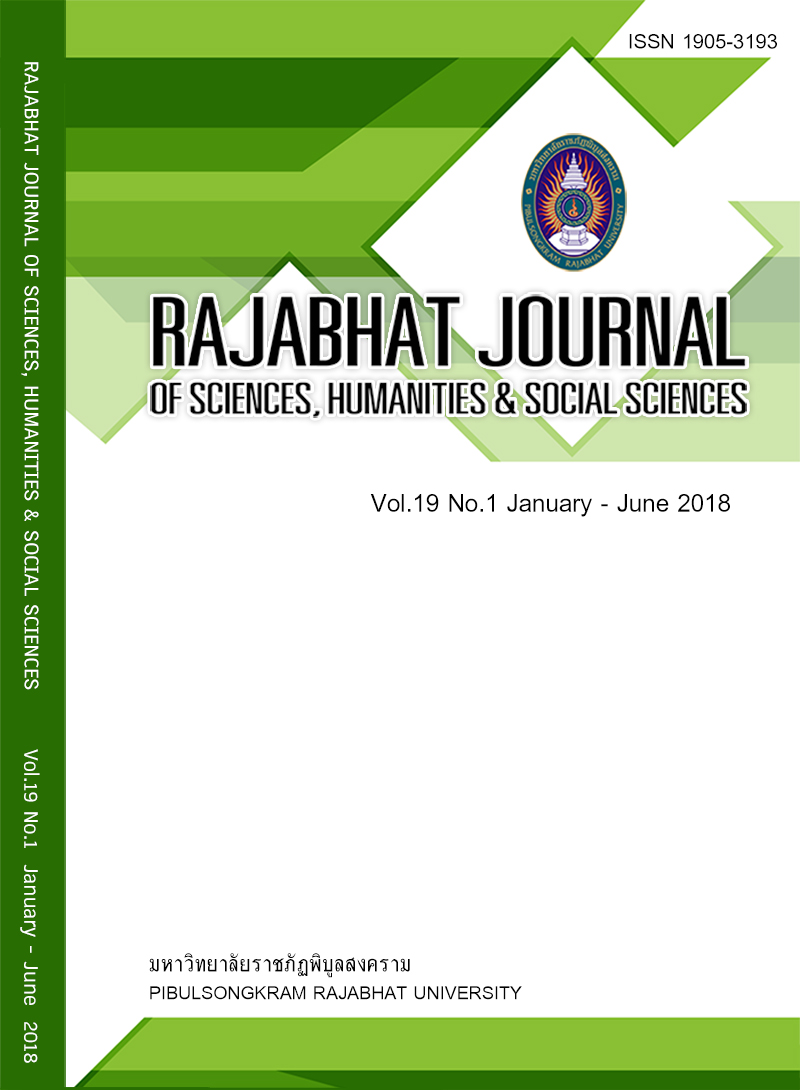INTEGRATED RESEARCH TOWARD SUSTAINABLE LOCAL DEVELOPMENT
Keywords:
integration, sustainable development, the King’s Philosophy and Sustainable Development, ecotechnology, community and capital economies, Thailand 4.0Abstract
Integrated research in connection with teaching students following the King’s Philosophy and Sustainable Development (understand - reach out – develop) will lead to sustainable local development in accordance with the United Nations Programme on Sustainable Development Goals (SDGs). The roots of Thai culture are agricultural society; most people are living on the surroundings of natural resources (soil – water – forest and biodiversity). Thus, integrated research for sustainable local development in terms of area - based or issue – based problems should focus on natural resources, culture and local wisdom following the concept of ecotechnology. This will keep the balance between human and nature because the balance of nature is sustainability. This approach will strengthen and sustain our social and community economic development making it balancing with capital economy currently under “Thailand 4.0” economic model that is driven by innovation, sciences and disruptive technology.
References
Baimai V. Education, Natural Science and Biodiversity.1984. Bangkok: Bangkok Printing, 2014.
Baimai V. Network of research on biodiversity, culture and local wisdom, Rajabhat Journal of Sciences, Humanities & Social Sciences. 2015; 16(2): 253-267.
Bangkok Post: Thursday July 27, 2017: B6
Bangkok Post: Tuesday August 2, 2017: B4
Bangkok Post: Wednesday August 1, 2017: 3
Bangkokbiznews. August 24, 2017: 1
Carson R. Silent Spring. USA: Houghton Mifflin Company Boston, 1962
ChiangthongK. Research on Ban ThiPhu YeKarenVillage, Thongphaphum District, Kanchanaburi Province. Bangkok: Bangkok Printing (1984). 2017.
Dac & Cities. 1987 Brundtland Report: our common future, 2016. Available at: https://www.dac.dk/ en/dac-cities/sustainable-cities/historic-milestones/1987--brundtland-report-our-commofuture/. Accessed September 13, 2017.
Department of Public Information. UN Conference on Environment and Development (1992), 1997. Available at: https://www.un.org/geninfo/bp/enviro.html. Accessed September 13, 2017.
Maesincee S. Thailand’s development model towards stability, prosperity and sustainability, Department of International Trade Promotion, Annual Report 2016. 2016: 124-127.
Pramual P. Sticky rice bamboo basket. Bangkok: Bangkok Printing (1984). 2017.
Satapanawatana J. Community economy in lower northern Thailand. Bangkok: Sangsan Printing, 2003.
Siripatrachai P. STEM education and development of skill in 21th century, Executive Journal.2013; 33: 49-56.
Sufficiency Economy Philosophy: Thailand’s Path towards Sustainable Development Goals 2017.
2nd ed. Thailand: Ministry of Foreign Affairs, Kingdom of Thailand, 2017.
The Guardian. Sustainable Development Goals: all you need to know, 2015. Available at: https://www.theguardian.com/global-development/2015/jan/19/sustainable-development-goals united-nations. Accessed September 13, 2017.
United Nations. (World Summit on Sustainable Development, 2002. Available at: https://www.un.org/ events/wssd/summaries/envdevj1.htm. Accessed September 13, 2017.
United Nations. United Nations Conference on Sustainable Development, Rio+20, 2012. Available at: https://sustainabledevelopment.un.org/rio20. Accessed September 13, 2017.
United Nations. Development Programme Millennium Development Goals, 2016. Available at: https://www.undp.org/content/undp/en/home/sdgoverview/mdg_goals.html. Accessed September 13, 2017.
Wilson EO. (ed.). BioDiversity. Washington, D.C., USA: National Academy Press, 1988.
Yaemkong S. Diversity of phenotypic characteristics of Thai indigenous chickens in Phitsanulok Province, Rajabhat Journal of Sciences, Humanities & Social Sciences. 2015; 15(2): 63-73.
Downloads
Published
How to Cite
Issue
Section
License
Each article is copyrighted © by its author(s) and is published under license from the author(s).










